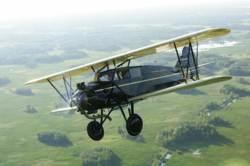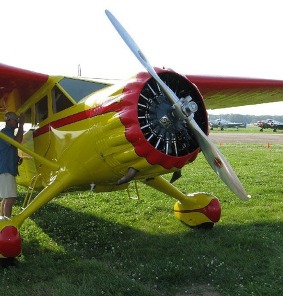Aviation Foundation of America applauds new amendment in FAA Authorization Bill that protects the design data of more than 1,000 different aircraft types built from 1927 through 1939. Fans of American aviation are celebrating a landmark victory for the preservation and accessibility of historic aircraft data as the recently passed in the FAA Air Transportation Modernization and Safety Improvement Act 2012 (HR 658). The cause for celebration is a small, but significant amendment that requires the FAA to protect aircraft technical drawings and other design data from the dawn civil aviation in the United States.

The 1929 Paramount Cabinaire is an example of an aircraft whose design data will now be preserved and made available because of the amendment. -prweb image
The amendment, incorporated into the overall FAA Reauthorization Bill, mandates the preservation of vintage aircraft design data for 1,257 different makes and models of aircraft built in the United States from March 1927 through November 1939. It has been labeled "The Herrick Amendment" by the bill's primary sponsor, Congressman Sam Graves (R-MO) after aviation preservationist and Aviation Foundation of American president Greg Herrick of Minneapolis, Minn.
This amendment also removes the claim of "trade secret" status to vintage aircraft drawings and grants access through a Freedom of Information Act request to anyone who wishes to examine or copy the drawings for non-commercial purposes. In addition, it relieves surviving holders of the Approved Type Certificate from liability for use of the data.

-1938 Stinson SR-10J RELIANT Vintage aircraft, file photo-
"Beginning with the Wright brothers, the United States has led the way for aviation - and these files chronicle the development of our aircraft industry. They document the very fabric of American innovation," said Herrick. "The accessibility and preservation of these files ensures an irreplaceable resource for present and future generations. It also allows vintage aircraft owners to maintain the continued safe operation of aircraft that are still flying."
Regrettably, over time much of this technical data became scattered through various government offices and storage facilities. Locating this data for purposes of restoration, repair or continued airworthiness inspections for a given model of aircraft grew increasingly problematic. In addition, the FAA adopted a policy that made obtaining the data very difficult.
In 1997, Herrick requested the drawings for the tail of a 1937 tube-and-fabric Fairchild aircraft. Access was denied on the basis that the design contained "trade secrets" of the original manufacturer. A lawsuit was filed and iterations of the effort led the case 15 years later to the United States Supreme Court where in a unanimous decision the case was remanded to the lower court and Herrick finally obtained copies of the drawings. It was this experience the led Herrick to champion the amendment.
The FAA Air Transportation Modernization and Safety Improvement Act 2012 is available at: House/Gov, see Title VIII, Sec. 816: Historical Aircraft Documents.- FMI: prweb